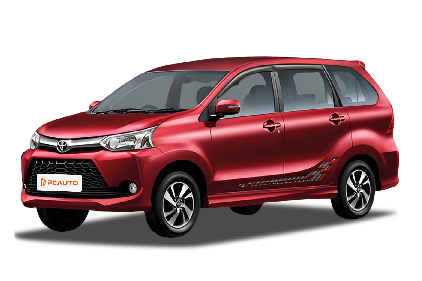Q
How many km per liter is the Toyota Avanza 2022?
According to official figures, the 2022 Toyota Avanza delivers solid fuel economy. The 1.5L model returns a combined fuel consumption of around 15 to 16 km/l, while the 1.3L variant is slightly more efficient at approximately 16 to 17 km/l. Of course, these numbers can vary depending on your driving style, road conditions, and how much you're carrying.
As a practical, family-focused MPV, the Avanza's fuel efficiency stacks up well against its competitors, making it a solid pick for Malaysian drivers looking for a daily commuter or a family runabout. It's also worth noting that things like regular maintenance, keeping your tires properly inflated, and even how you use the air conditioning can impact those fuel numbers. Sticking to good driving habits and keeping the car well-maintained can definitely help you squeeze out a bit more efficiency.
If you're shopping around for a fuel-sipper, it's always a good idea to check out the fuel economy stats of other similar MPVs or crossovers. But the Avanza has long held a strong reputation in Malaysia, thanks to Toyota's reliability and after-sales support.
Special Disclaimer: This content is published by users and does not represent the views or position of PCauto.
Related Q&A
Q
How big is the 2022 Avanza?
The 2022 Toyota Avanza measures in at 4,395 mm long, 1,730 mm wide, and 1,695 mm tall, with a 2,750 mm wheelbase. As a 7-seater MPV, its compact footprint makes it a breeze to navigate Malaysia's tight city streets and squeeze into those tricky parking spots, while still offering decent interior room. It's built on Toyota's DNGA platform, which has allowed for tweaks to the chassis and suspension that really step up the driving stability and ride comfort—perfect for family hauling. Under the hood, the 2022 Avanza gives you a choice between 1.3-liter and 1.5-liter naturally aspirated engines, paired with either a 5-speed manual or CVT transmission. This setup strikes a good balance between fuel efficiency and the demands of daily driving. Plus, with 200 mm of ground clearance, it can handle those rougher patches of road you sometimes encounter in Malaysia, and the flexible seating inside lets you easily adjust the cargo space when you need it. For Malaysian buyers, the Avanza has always been a solid value-for-money and practical choice, especially shining for larger families and everyday city commutes.
Q
Is the Avanza 2022 good for families?
The 2022 Toyota Avanza stands as a well-rounded 7-seater MPV tailored for family buyers in the Malaysian market. Its 1.5L Dual VVT-i engine paired with a CVT gearbox delivers a smooth, easy-driving experience, while the claimed fuel efficiency of around 15km/L makes it a practical choice for daily commutes. The sliding second-row seats offer decent space flexibility, and the 230mm ground clearance adds a bit of versatility for rougher roads. Safety basics are covered with standard VSC and dual airbags.
In its class, the Avanza shines with relatively low maintenance costs and strong resale value retention. However, the third row is best suited for kids or short journeys – if your family regularly needs to transport seven people over long distances, I’d definitely recommend a test drive to check if the space works for you. Given Malaysia’s hilly terrain, splurging on the factory-fitted chassis reinforcement kit could be a smart move to boost its capability on challenging roads. Also, be sure to check the ASEAN NCAP safety ratings when picking your preferred trim level.
Q
How many seaters are in the Avanza 2022?
The 2022 Toyota Avanza hits the Malaysian market with two seating configurations: 7-seater and 8-seater. The 7-seater goes with a 2+2+3 layout (that means captain seats in the second row), while the 8-seater opts for a 2+3+3 setup. This flexible design caters to different family or commercial needs, making it especially handy for big Malaysian families or folks who need to carry both passengers and cargo. As Toyota's main player in the Southeast Asian MPV scene, this Avanza keeps the lineup's reputation for solid practicality. They've tweaked the dimensions, so legroom in the third row is better than the previous generation. Under the hood, the 1.5L Dual VVT-i engine balances fuel efficiency nicely – official figures come in at around 15.5km/L. Interesting to note, Malaysian buyers tend to lean towards the 7-seater; those second-row captain seats are more comfortable and just fit most local family setups better. The 8-seater, though, is the go-to for business users who regularly need to shuttle more people around. Across the range, standard safety kit like ABS+EBD and dual airbags meets what Malaysian customers expect from an entry-level MPV.
Q
How much is Avanza 2022 in the Philippines?
The 2022 Toyota Avanza's pricing in the Philippines varies depending on the trim and configuration. The base 1.3L J MT starts at around 735,000 Philippine pesos (approximately 62,000 Malaysian ringgit), while the top-spec 1.5L G AT goes for about 1.1 million Philippine pesos (roughly 93,000 Malaysian ringgit). Keep in mind, actual prices might fluctuate a bit based on regional promotions and taxes.
This ride has built up a solid following in Southeast Asia, and it's easy to see why. It's all about practicality and fuel efficiency, with a 7-seat layout that makes it a solid pick for families. And let's not forget its strong fuel economy numbers—definitely a plus.
For Malaysian buyers, while the Philippine pricing gives you a ballpark idea, there are some key things to factor in: differences in tariffs between the two countries, possible variations in specs, and of course, currency exchange rate swings. If you're seriously considering one, your best bet is to hit up local Toyota dealers for the latest quotes.
As a global strategic model for Toyota, the Avanza has always had a good reputation for durability and backed by a reliable after-sales network. All things considered, it's definitely one to keep on your shortlist if you're shopping in this segment.
Latest Q&A
Q
What is the CC of Honda City 2020?
The 2020 Honda City hits the Malaysian market with two engine choices: a 1.5-liter SOHC i-VTEC naturally aspirated petrol engine and a 1.5-liter DOHC i-VTEC hybrid system. Let's break down the specs. The petrol unit displaces 1497cc, cranking out 121 horsepower and 145 Nm of torque. On the hybrid side, it pairs that same 1.5-liter engine with an electric motor, resulting in a combined 109 horsepower – this one's all about fuel sipping efficiency.
Now, CC (cubic centimeters) is the measure of engine displacement, and it directly impacts how a car performs and drinks fuel. Typically, a bigger displacement means more power, but it can also mean higher fuel bills. The City's 1.5-liter sweet spot is a big reason it's so popular in Malaysia – it strikes that perfect balance between pep and fuel economy, handling both city commutes and longer drives like a champ.
But the 2020 City isn't just about the engine bay. It also comes loaded with Honda Sensing safety tech and a modern, fresh interior design, which really ups its game in the market. For Malaysian buyers, this car ticks all the boxes: practical, easy on the wallet at the pump, and packed with the latest tech. It's a solid all-rounder.
Q
How much does a Honda 2020 cost?
Prices for the 2020 Honda models in Malaysia vary quite a bit depending on the specific model and how it's kitted out. Take the Honda City, for example – you're looking at roughly RM70,000 to RM90,000. The Civic sits a bit higher, usually ranging from around RM110,000 up to RM140,000, while the CR-V typically falls between RM140,000 and RM170,000. exact figures hinge on the trim level, engine specs, and any extra add-ons you might go for.
When buying a new car in Malaysia, it's not just the sticker price you need to factor in. There's registration fees, insurance, road tax – all that extra stuff adds up and affects the final on-the-road cost.
Over in the used car market, 2020 Honda models will fluctuate in price too, based on mileage, condition, and remaining warranty. You can generally pick one up for 20% to 40% less than a brand-new equivalent.
If you're in the market, I'd definitely recommend shopping around different dealers to compare quotes. It's also worth checking out any ongoing Honda promotions or financing deals – those can really help you save some cash.
Hondas have a solid rep in Malaysia for being reliable and fuel-efficient, especially popular models like the City and Civic. They're pretty affordable to own long-term, and getting them serviced or repaired is relatively straightforward.
Q
What is the top speed of Honda City 2020?
The 2020 Honda City maxes out at around 190 km/h, which is the top speed you can squeeze out of its 1.5-liter i-VTEC naturally aspirated engine under ideal conditions. Of course, in the real world, you might see a slight difference depending on road conditions, how much you're carrying, or the weather. This car is pretty popular in the Malaysian market, and it's not just because of its solid performance—it's also about that fuel efficiency and nimble handling that makes city driving a breeze. The CVT gearbox in the City does a good job smoothing out power delivery, so acceleration feels seamless and efficient, whether you're commuting daily or hitting the highway for a longer drive. For Malaysian buyers, beyond just top speed, overall performance and maintenance costs matter a lot, and the City delivers here too. Its low trouble rate and wide service network make life easier for owners. If you're craving a bit more zip, there's always the Honda City RS variant. It gets some tweaks to the engine tuning and sportier bits, but don't expect a huge jump in top speed—these cars are all about balancing practicality with a bit of driving fun, after all.
Q
How safe is the Honda City 2020?
The 2020 Honda City holds its own when it comes to safety, packing in 6 airbags, Vehicle Stability Assist (VSA), Anti-lock Braking System (ABS), and Electronic Brake-force Distribution (EBD). That's a pretty solid setup for the class, and it should do a good job of keeping you protected during those daily drives around Malaysia. Honda's ACE Body Structure is also on board here, which is designed to effectively disperse crash energy and boost occupant safety in the event of a collision. It's worth highlighting that the 2020 City scored a 5-star rating in ASEAN NCAP crash tests, which is a solid stamp of approval for its safety credentials. For Malaysian buyers, picking this car means you're not just getting Honda's usual reputation for reliability, but also a decent level of safety kit. If safety is a top priority for you, it's definitely worth checking out the specific safety features when you're looking to buy – things like whether it comes with Honda Sensing. That suite includes handy advanced features like Adaptive Cruise Control and Lane Keeping Assist, which can go a long way in making your drives even safer.
Q
What is the fuel economy of the Honda City 2020?
The 2020 Honda City demonstrates excellent fuel efficiency in the Malaysian market. The variant equipped with the 1.5L i-VTEC petrol engine and CVT transmission has an official combined fuel consumption of 5.4 L/100km (approximately 18.5 km/L). The hybrid e:HEV variant is designed for even higher efficiency, though its specific fuel consumption figure should be verified with official sources or latest reviews, as the widely cited 3.4 L/100km (approximately 29.4 km/L) lacks direct support in the provided search results and may not reflect real-world conditions in Malaysia. Both powertrains closely align with the demands of Malaysian consumers who prioritize fuel economy. Actual fuel consumption may vary depending on factors such as driving habits, road conditions, and vehicle load. Therefore, adhering to a regular maintenance schedule is crucial for maintaining optimal fuel efficiency.
Given Malaysia's hot and humid climate, judicious use of the air conditioning system and maintaining the recommended tire pressure can contribute significantly to improving fuel economy. As a top-selling model in the B-segment sedan market in Malaysia, the Honda City's fuel efficiency remains competitive against its peers, making it a practical choice for daily commuting and family use. The e:HEV hybrid version, in particular, presents a compelling option for environmentally conscious drivers seeking to minimize long-term running costs, pending verification of its specific fuel economy claims.
View MoreRelated News

Toyota Land Cruiser FJ did not disappoint, the most anticipated civilian off-road vehicle is back.
Kevin WongOct 21, 2025

Toyota bZ3X launched in Hong Kong and will continue to expand to other right-hand drive markets in the future
JamesOct 21, 2025

Toyota's comprehensive transformation: What changes will happen to Century, Lexus, GR, Toyota, and DAIHATSU?
Kevin WongOct 18, 2025

Toyota Land Cruiser FJ will return on October 20, produced in Thailand, and sold globally
RobertOct 18, 2025

Zeekr 7X VS Toyota bZ4X: Which car, from China or Japan, is more futuristic?
Kevin WongOct 15, 2025
View More












Pros
Cons